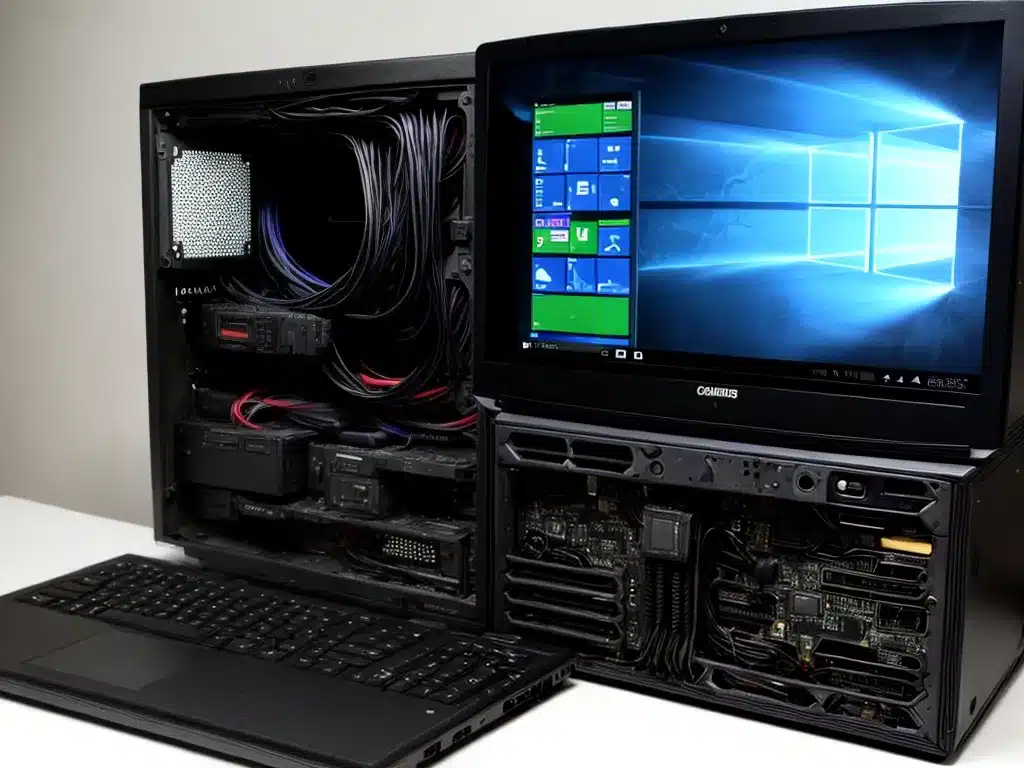
Starting your computer in safe mode can help diagnose and fix a variety of issues that may be preventing your computer from booting properly under normal conditions. Here is a comprehensive guide on using safe mode to troubleshoot and resolve common boot problems:
What is Safe Mode?
Safe mode starts your computer with only the bare essential drivers and services required for basic operation. This eliminates any problems caused by third party software, drivers, or settings that may be interfering with normal booting.
There are several types of safe mode:
-
Regular safe mode – Starts with a limited set of drivers and services. Networking and peripheral devices may not work.
-
Safe mode with networking – Same as regular safe mode but with network capability enabled.
-
Safe mode with command prompt – Starts in text only mode with no graphical interface. Gives access to command line tools.
-
Enable boot logging – Creates a log file tracking the boot process to diagnose where problems occur.
Common Problems Safe Mode Can Fix
Booting into safe mode can help troubleshoot and fix a variety of boot issues:
-
Software conflicts – Conflicts between applications, drivers or services causing crashes or hangs during boot.
-
Driver issues – Outdated, corrupt or incompatible device drivers preventing successful loading.
-
Malware infections – Viruses, spyware or other malware interfering with startup.
-
System file corruption – Important system files like the registry, bootloader or configuration files may be damaged or corrupted.
-
Hardware failures – Faulty memory, disk drives or other hardware can cause boot failures.
-
Application settings – Incorrect or incompatible software settings blocking boot.
How to Enter Safe Mode
The steps to start in safe mode vary slightly depending on your version of Windows:
Windows 10/8/7 Safe Mode
-
Access the Windows Advanced Startup Options menu:
-
On the login screen hold Shift and click the Power button > Restart.
-
Go to Settings > Update & Security > Recovery and under Advanced Startup, click Restart Now.
-
-
On the Choose an Option screen, select Troubleshoot.
-
Go to Advanced Options > Startup Settings > Restart.
-
After your PC restarts, you’ll see a list of options. Select the safe mode option you want using the corresponding number key.
Windows XP Safe Mode
-
Restart your computer and press the F8 key repeatedly until the Windows Advanced Options menu appears.
-
Select the safe mode option you want using the arrow keys and press Enter.
Using Safe Mode to Diagnose and Fix Boot Problems
Once in safe mode, you can begin troubleshooting boot issues:
-
Try replicating the boot problem. If the computer now starts normally, a conflict with third party software or settings is likely the cause.
-
Use the command prompt or utilities like System File Checker to scan for and replace corrupted files.
-
Update, rollback or uninstall recently installed drivers.
-
Use the Task Manager to isolate problematic programs and services.
-
Check event logs for error messages pointing to specific failed processes and drivers.
-
If a specific piece of hardware is suspected, disable it in Device Manager and reboot.
-
Try resetting components like memory modules and connectors to eliminate physical faults.
After finding the source of the problem, reverse changes or apply permanent fixes in normal mode like updating drivers, changing configurations, or removing malware.
When to Use Advanced Startup Options
If safe mode does not resolve the issue, advanced startup options can provide additional troubleshooting help:
-
Disable automatic restart on failure – Prevents automatic rebooting so you can see BSOD stop error codes.
-
Disable early launch anti-malware protection – Temporarily turns off security software to check for conflicts.
-
Enable debugging/boot logging – Creates detailed log files to pinpoint faulting drivers or processes.
-
Start in minimal or low-resolution mode – Isolates issues with graphical drivers and settings.
-
Revert to previous build – Downgrades to earlier system restore point if recent updates caused problems.
Reset or Clean Install If Nothing Helps
If no issues are found and the computer still will not start normally, resetting or clean installing Windows may be necessary to fix underlying OS corruption problems. Backup important data first, then:
-
Use the Reset This PC option to refresh Windows system files while keeping personal data.
-
Perform a clean install by booting from Windows install media to wipe everything and freshly install Windows.
Booting in safe mode can help diagnose and resolve a wide range of potential computer boot problems. Combining safe mode options with advanced tools provides a powerful environment to troubleshoot Windows startup issues.












